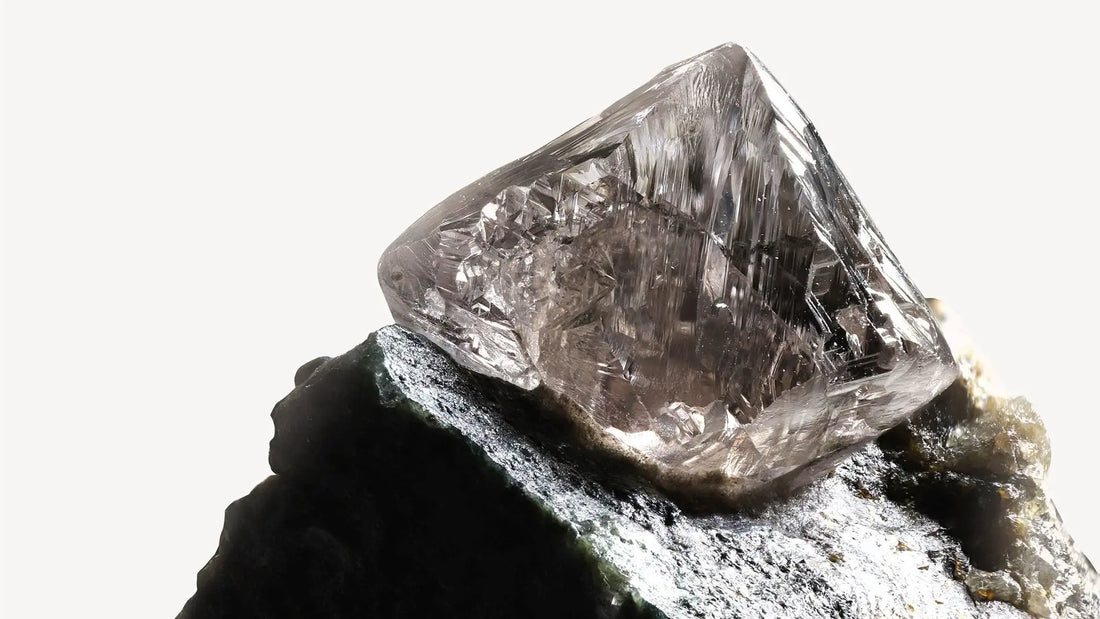
The Diamond Industry Reigns Supreme: A Look at Its Unmatched Success
Share
THE DIAMOND INDUSTRY
CONTINUES TO GO FROM
STRENGTH TO STRENGTH
Yet myths surrounding the industry’s operations, its standards and its players continue to perpetuate. This is, in part, a result of a historical legacy that has not yet been fully corrected, despite the transformation and reform which has occurred over recent decades. These myths and misconceptions erode trust, and, in the long run, they can be harmful – not only to the diamond industry but especially to those who most depend on the positive impact of diamonds such as the communities who live where diamonds come from.
In an age where consumers are more inquisitive and enlightened than ever, people wish to know about the values and responsible business practices of the companies and indeed the wider industry from which they are purchasing.we want to support consumers in taking informed decisions by providing information transparently.
The modern diamond industry is not perfect, and of course has challenges and areas of improvement. Our strength is the unity with which we address opportunities and challenges. The diamond industry supports the livelihoods of 10 million people across the world, helping to provide better access to healthcare, education and infrastructure, as well as scale and access to funding to contribute to solving some of the world’s biggest challenges. The industry is also pursuing land protection and rehabilitation across continents with fervor.
With this analysis, we seek to correct misconceptions and answer questions about the industry to enhance trust and allow consumers to make informed decisions.
As the landscape evolves, we will endeavor to continue to fill data gaps and engage in feedback and collaborations that can better the industry and enhance transparency.
We thank you for taking the time to read the report.”
Introduction
In recent years, the jewelry industry has evolved with the advent of laboratory-grown diamonds as a new category. An abundance of misconceptions, myths and unsubstantiated claims have entered the information sphere.
In this analysis, we set out to address misinformation about both natural diamonds and laboratory-grown diamonds.
The intent is not to present this as a dichotomy, or position as one better than the other, but instead to share the realities and conditions upon which laboratory-grown diamonds and natural diamonds are created. Equally, our focus is on providing clear, accurate and reliable information so consumers can make informed choices. As detailed in the research, the reader can use existing information to formulate their own opinions.
Misinformation is harmful for all stakeholders in the diamond value chain, whether that is the consumer, mining companies, investors or local communities involved in regions that rely on the production of diamonds for economic stability.
We are dedicated to creating a positive legacy for all these stakeholders through openness and unbiased research.
Our work details an investigation into questions often posed relating to environmental and social standards, alongside general misconceptions about the market, such as quantity of diamonds recovered.
We redress the claims that it is impossible to distinguish between a laboratory-grown diamond and a natural diamond, explore how consumers can navigate this when buying diamonds and detail the global regulations in place to protect purchasing decisions along the supply chain.
On the environment, we delve into the nuances of sustainability claims made by the laboratory-grown diamond industry. Alongside reviewing impacts on water, waste and chemicals, we also look at the emissions footprint of both natural and synthetic diamonds, and the process of responsible opening and closure of mines.
Outdated and misleading narratives about social conditions in the natural diamond industry are also evaluated. We explore ethical sourcing of natural diamonds, the heightened focus on transparency and the adoption of technology to enhance traceability. Through spotlighting initiatives and social programs, we seek to communicate the positive impact the natural diamond industry has on the livelihoods of 10 million people, especially from diamond producing countries.
By tackling outdated and factually incorrect narratives, we are able to collaborate with all stakeholders to better communicate the inherent value and benefit of natural diamonds, as well as ensure clear and accurate information is shared about the industry in order to build trust and cultivate transparency.
